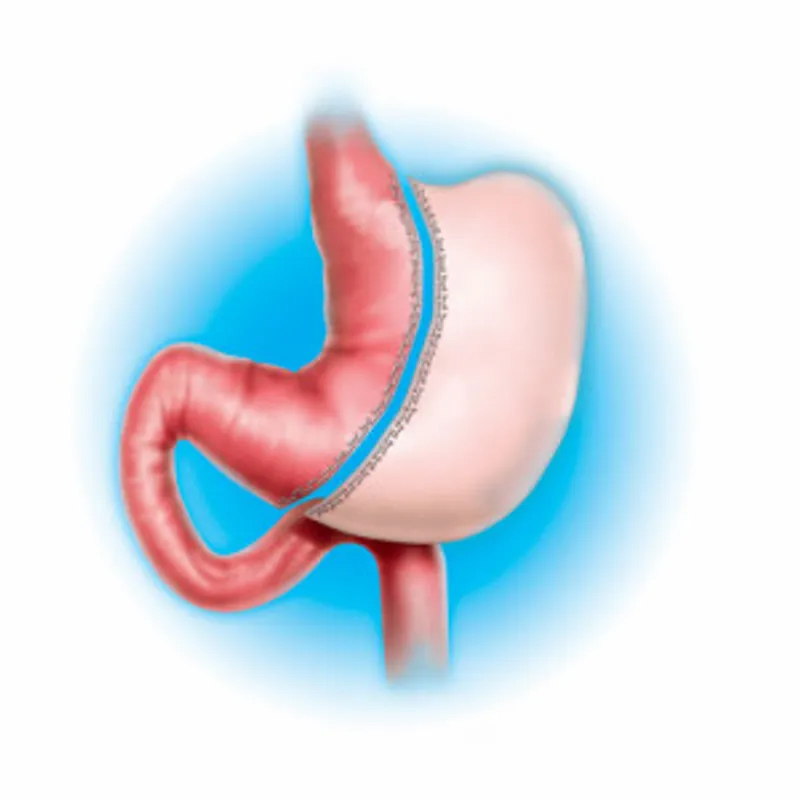The gastric sleeve procedure involves the removal of the largest portion of the stomach, leaving only a thin, sleeve-shaped segment. Because the stomach is reduced in size, the patient can only eat a small amount of food at a time, much in the same way as with the LAP-BAND® procedure. This type of weight-loss surgery is known as a restrictive procedure because it “restricts” you from eating as much food at mealtime. However, unlike gastric bypass, it does not limit you from absorbing nutrients and vitamins. Therefore, the risk of malnutrition is very low. Dumping syndrome is also unlikely, so most types of foods can still be enjoyed, but in much smaller amounts. Because the portion of the stomach that is primarily responsible for hunger is removed, the patient’s appetite will be significantly reduced.
Sleeve gastrectomy is an alternative for patients who may not be good candidates for gastric bypass because of concerns about rerouting the intestines. It also may be an option for patients who would be candidates for gastric banding but are uncomfortable with the idea of having a foreign device placed around the stomach.
In some cases, sleeve gastrectomy may also be performed as a preliminary procedure for patients who have a very high body mass index (BMI) and are at high risk of developing complications from gastric bypass surgery. The gastric sleeve allows patients to begin losing weight, bringing their BMIs down to a level at which the gastric bypass procedure can be performed without the increased risks associated with extreme obesity.
At our practice in Overland Park, Kansas this and other weight-loss operations are performed laparoscopically, significantly reducing the amount of risk, discomfort, and recovery time.


